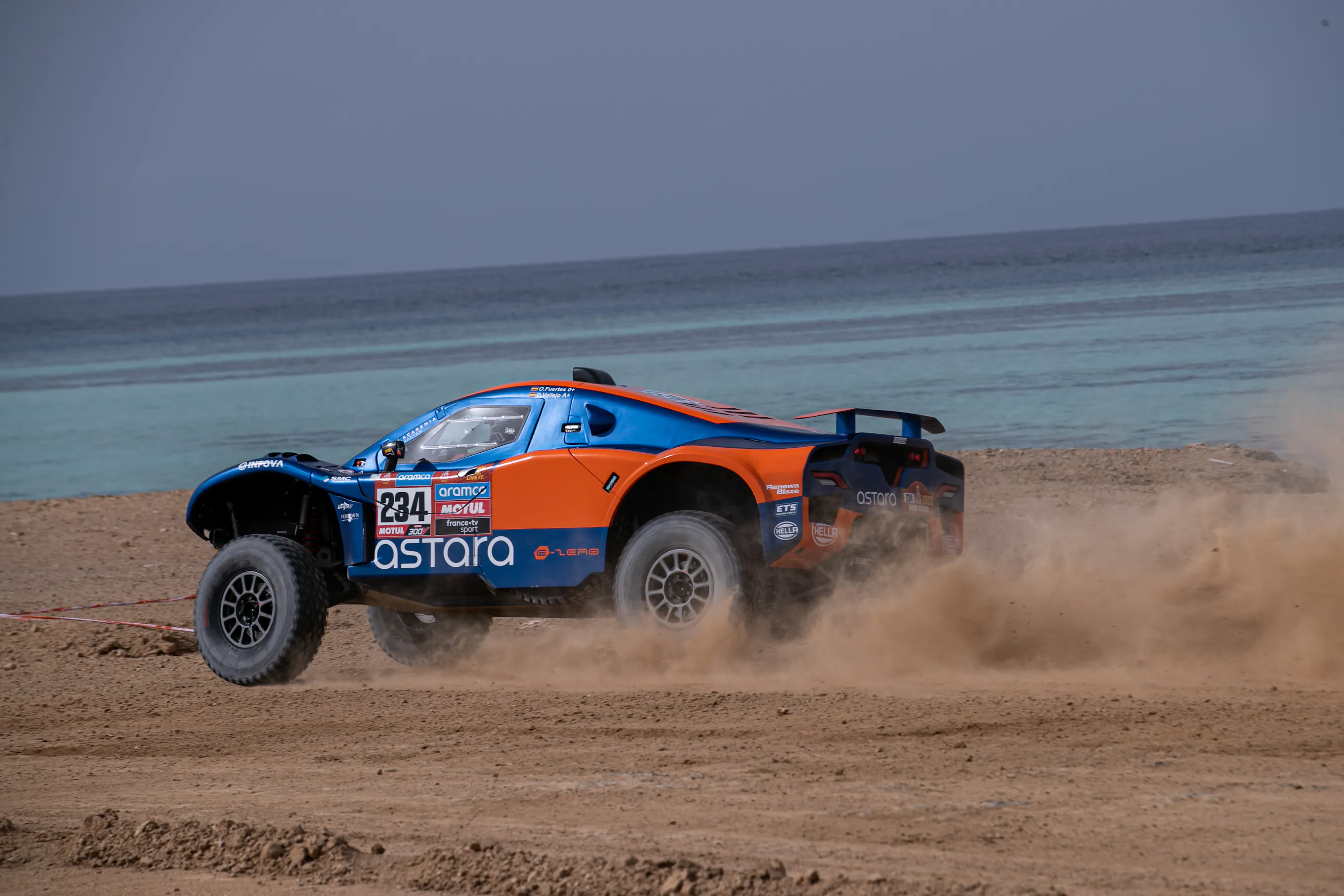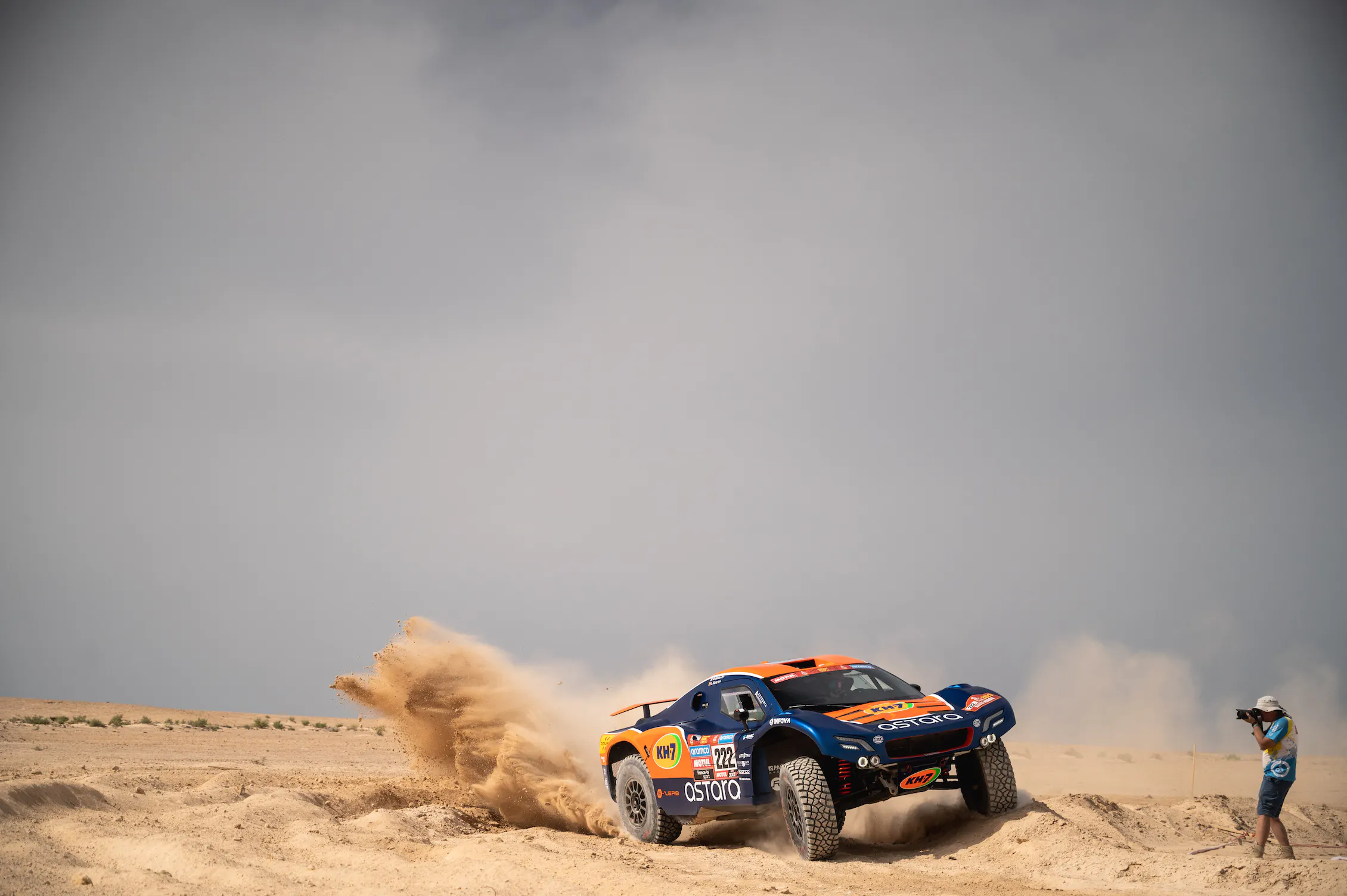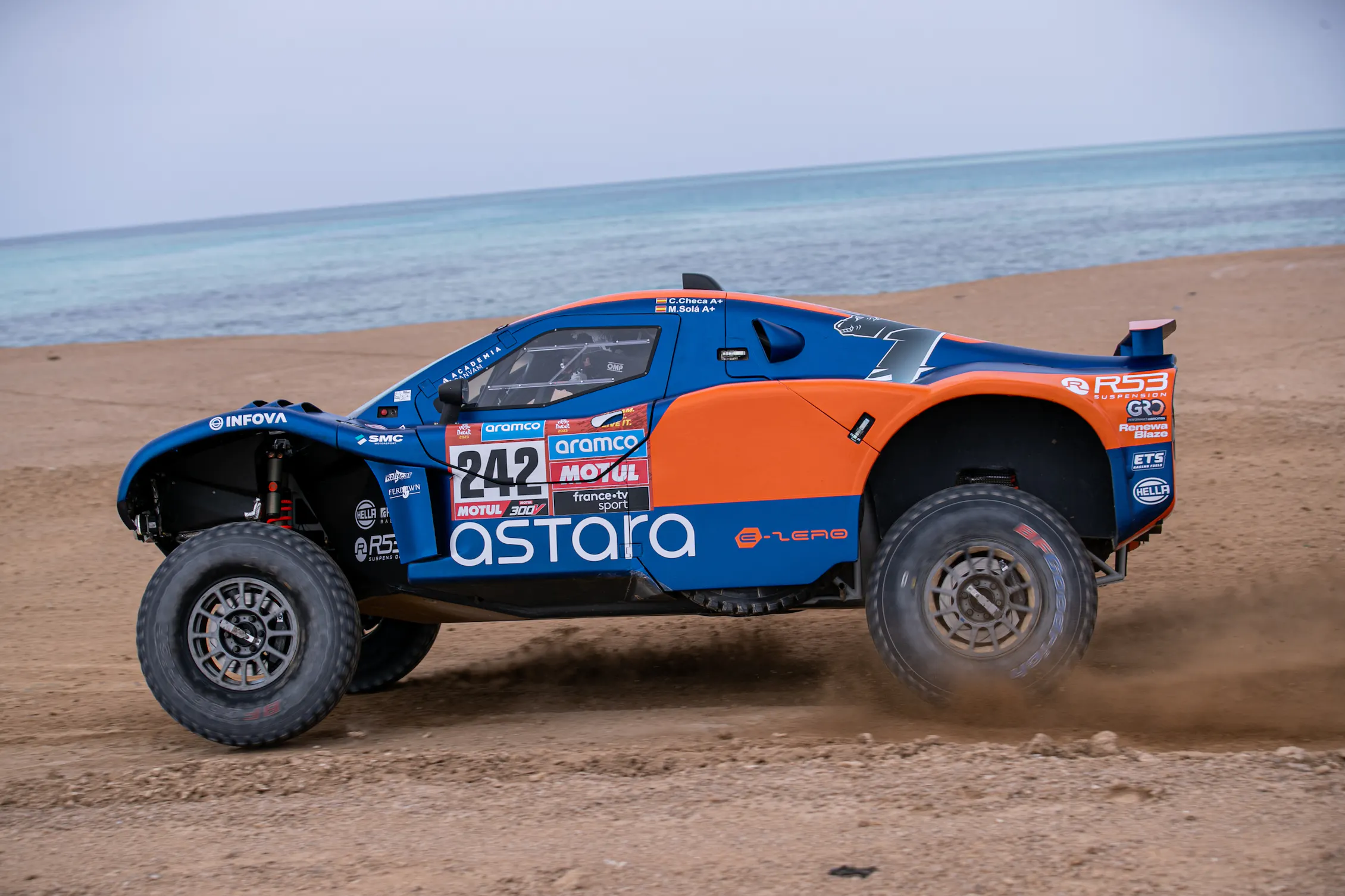
ASÍ ES CÓMO ASTARA HACE EL DAKAR MÁS SOSTENIBLE CON EL ASTARA 01 CONCEPT
- Astara y el Astara Team afrontan su segundo rally Dakar con el objetivo de ser aún más sostenibles.
- La empresa de movilidad global volverá a medir y auditar la huella de carbono de Laia Sanz, Carlos Checa y Óscar Fuertes y su equipo en el Dakar 2023, incluidas las llamadas emisiones indirectas del personal y los materiales.
- Los coches Astara 01 Concept volverán a utilizar combustible e-fuel, gracias al cual prácticamente todas sus emisiones serán neutras.
OBJETIVO: PARTICIPAR EN EL DAKAR CON UNA HUELLA DE CARBONO NEUTRA
La medición que realizó el equipo en 2022 afectó a los alcances 1 y 2. Este año, como novedad y como compromiso para seguir mejorando el cuidado por el medioambiente, Astara incluirá el alcance 3. Por tanto, para medir la huella de carbono generada durante el Dakar se tendrán en cuenta los mencionados trayectos del equipo de competición.
Al final del rally, se elaborará un informe detallado de la huella de carbono del Astara Team y el resultado se compensará con creces, al igual que se hizo el año pasado. Para ello Astara colaborará con distintos proyectos de compensación de emisiones para neutralizarlas y de este modo alcanzará su objetivo de participar en el Dakar con una huella de carbono nula.
SOBRE ASTARA
The Open Mobility Company
Astara es una innovadora empresa de movilidad global que lidera el sector, con una amplia cartera de servicios y productos. Con una facturación estimada en 2022 de 5.500 millones de euros, Astara está presente en España, Alemania, Portugal, Austria, Bélgica, Finlandia, Luxemburgo, Países Bajos, Polonia, Suecia, Suiza, Argentina, Bolivia, Chile, Colombia, Perú y Filipinas, representando a 30 marcas de automóviles. Astara proporciona un ecosistema de distribución y de movilidad que abarca todos los mercados en los que opera el grupo, incluyendo todas las opciones de propiedad, suscripción, uso y conectividad, siempre de la mano de la última tecnología. Todo ello gracias a un equipo diverso de más de 25 nacionalidades, en estos 17 países y 3 continentes, Europa, Latino América y Sudeste Asiático.
Instagram: @ASTARAmobility
Twitter: @ASTARAMobility
Youtube : Astaramobility
astara.com
SOBRE ASTARA TEAM
ASTARA TEAM es un equipo de competición creado en 2021 para competir en el Rally Dakar y demostrar que la excelencia tecnológica y la competición al más alto nivel son absolutamente compatibles con el respeto por el medioambiente y la diversidad. ASTARA TEAM afronta su segundo Dakar con tres ASTARA 01 CONCEPT, un buggy 2WD de la categoría T1.3 alimentado por e-fuel, el vehículo más ligero de su categoría. Laia Sanz-Maurizio Gerini, Carlos Checa-Marc Solà y Óscar Fuertes-Diego Vallejo competirán al máximo nivel con una solución de movilidad eficaz y ecológica con el objetivo de repetir como el equipo más sostenible del Dakar. El Rally Dakar 2023 se celebra por cuarto año consecutivo en Arabia Saudí desde el 31 de diciembre al 15 de enero.
Mas información en: Astarateam.com
2 de enero de 2023 . La participación de la empresa de movilidad Astara en el rally Dakar comenzó hace un año con el firme objetivo de demostrar que la excelencia tecnológica y la competición al más alto nivel son totalmente compatibles, respetando el medioambiente y la diversidad. El Astara Team, con su coche Astara 01 Concept, alcanzaba su primera meta el pasado mes de enero, tras el Dakar 2022, con el compromiso cumplido: se convirtió en el equipo más sostenible del rally.
Un año después, la innovadora compañía afronta su segundo Dakar con un equipo muy potente, donde destacan Laia Sanz, Carlos Checa y Oscar Fuertes al volante, un trío con serias posibilidades de hacer un gran papel tanto a nivel competitivo como en sus principales objetivos: el cuidado del medioambiente y la relevancia de las personas y del trabajo en grupo. Tres pilotos, tres copilotos, tres coches, ocho vehículos de apoyo y un equipo de más de 30 personas luchan desde Arabia Saudí para ser aún más sostenibles en este Dakar 2023. ¿Cómo lo van a conseguir?
ASTARA TEAM, EJEMPLO DE SOSTENIBILIDAD
En 2022 ya demostraron ser el equipo más sostenible del Dakar. Ahora, ponen el listón mucho más alto compitiendo al máximo nivel con un mínimo impacto ambiental, evitando en cada proceso el dispendio de recursos y con la mejor solución posible en términos de rendimiento y protección del medioambiente.
De nuevo el Astara Team apuesta en 2023 por un vehículo ligero alimentado por e-fuel, el Astara 01 Concept, una evolución del modelo del año pasado, y que está demostrando su capacidad de competir al máximo nivel de forma sostenible utilizando este combustible ecológico y sintético basado en hidrógeno.
Para demostrarlo y reafirmar su compromiso, la empresa de movilidad global volverá a medir y auditar la huella de carbono que genere el equipo durante el rally Dakar 2023. Sus coches de carrera volverán a utilizar este combustible e-fuel por lo que prácticamente todas sus emisiones serán neutras.
Además, Astara tendrá en cuenta este año los trayectos en avión del personal y el transporte en barco de los vehículos hasta Arabia Saudí (las llamadas emisiones indirectas), y no solo las emisiones en competición.
Esta contabilidad y reporte de las emisiones se realiza según protocolos de medición estandarizados, en este caso, el estándar global GHG Protocol, ya que es el método más extendido y el que ha servido de base para desarrollar la norma ISO 14064. En ambos casos serán revisados y certificados por una entidad independiente de prestigio como es AENOR.
ASÍ SE MIDE LA HUELLA DE CARBONO
La huella de carbono de una organización es la totalidad de gases de efecto invernadero (GEI) emitidos tanto por efecto directo como indirecto a través de la actividad que desarrolla dicha organización, en este caso el Astara Team en un evento deportivo como es el Dakar.
El valor que se obtiene es el resultado de multiplicar el dato de consumo de cada fuente de emisión por su correspondiente factor de emisión (según el protocolo utilizado), por ejemplo, en el caso de los vehículos del equipo se utiliza el consumo de combustible en litros.
En el Protocolo GHG se establecen tres posibles alcances (también denominados como ‘scopes’) a la hora de medir la huella de carbono:
Alcance 1: se miden las emisiones directas de gases de efecto invernadero (GEI) que son, entre otros, el dióxido de carbono, metano, óxidos de nitrógenos, los CFC o clorofluorocarbonos y el ozono. Por ejemplo, se incluyen las emisiones que proceden de la combustión de calderas, hornos, vehículos... y que son propiedad de la organización o están controladas por dicha entidad en cuestión. También incluye las emisiones fugitivas (fugas de aire acondicionado, de metano de conductos...). En el caso del Astara TEAM se medirá el consumo de los coches de carrera y del resto de vehículos que utiliza el equipo, así como las emisiones fugitivas que pueden tener su origen en fugas de distintos componentes de los coches. Alcance 2: se tienen en cuenta las emisiones indirectas de GEI asociadas a la generación de electricidad adquirida y consumida por la organización. En este caso, el valor en el Astara TEAM es cero porque no contrata electricidad a terceros. Alcance 3: mide otras emisiones indirectas. Algunos ejemplos de actividades de este alcance son la extracción y producción de materiales que adquiere la organización, los viajes de trabajo a través de medios externos, el transporte de materias primas, de combustibles y de productos (por ejemplo, actividades logísticas) realizadas por terceros o la utilización de productos o servicios ofrecidos por otros.

